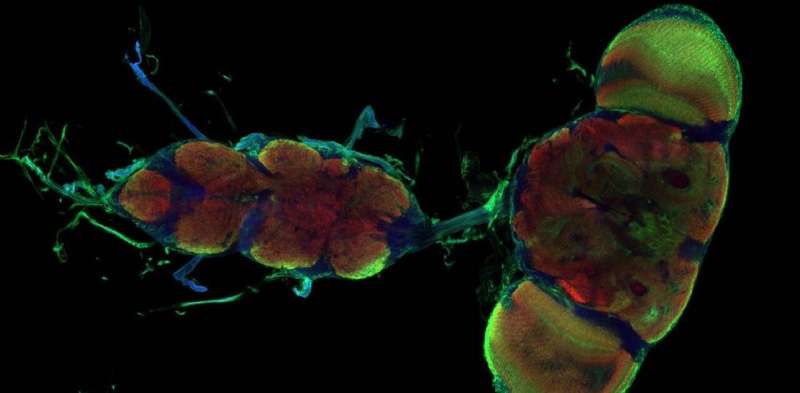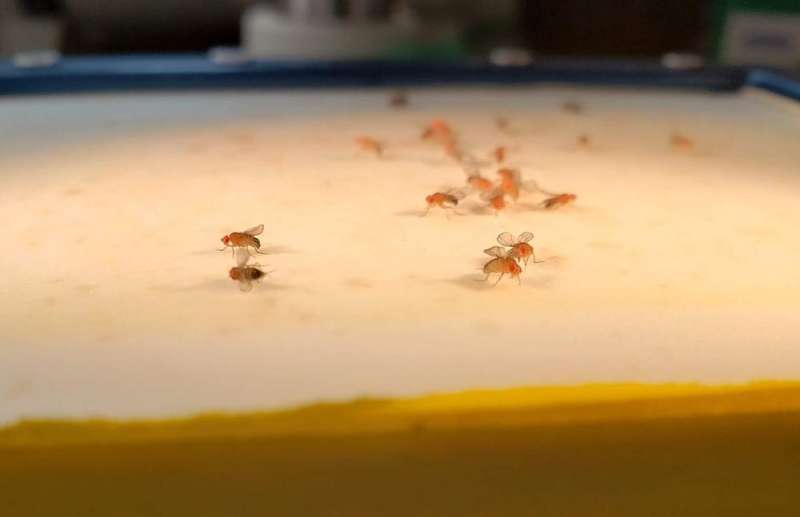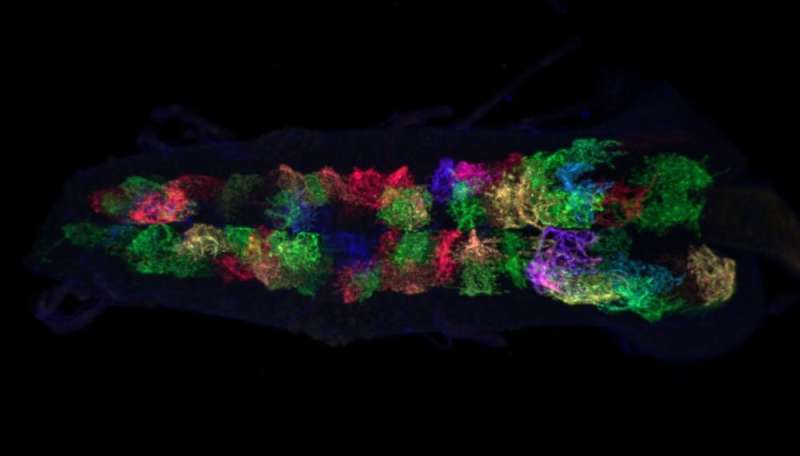Research uncovers 'on-off switch' that controls when neurons can change and grow

Neuroplasticity—the ability of neurons to —can be turned off and on by the cells that surround neurons in the brain, on fruit flies that I co-authored.
As fruit fly larvae age, their neurons shift from a highly adaptable state to a stable state and lose their ability to change. During this process, support cells in the brain—called astrocytes— that send and receive electrical information. When my team removed the astrocytes, the neurons in the fruit fly larvae remained plastic longer, hinting that somehow astrocytes suppress a neuron's ability to change. We then discovered two specific proteins that regulate neuroplasticity.
Why it matters
The human brain is made up of billions of neurons that form complex connections with one another. Flexibility at these connections is a , but things can go wrong if it isn't tightly regulated. For example, in people, too much plasticity at the wrong time is linked to brain disorders such as and . Additionally, reduced levels of the two neuroplasticity-controlling proteins we identified are linked to increased susceptibility to and .
Similarly, in our fruit flies, removing the cellular brakes on plasticity permanently impaired their crawling behavior. While fruit flies are of course different from humans, their brains work in very similar ways to the human brain and can offer valuable insight.
One obvious benefit of discovering the effect of these proteins is the potential to treat some neurological diseases. But since a neuron's flexibility is closely tied to learning and memory, in theory, researchers might be able to in a controlled way to . This could, for example, allow people to more easily learn a new language or musical instrument.

How we did the work
focused our experiments on a specific type of neurons called motor neurons. These control movements like and in fruit flies. To figure out how astrocytes controlled neuroplasticity, we used genetic tools to turn off specific proteins in the astrocytes one by one and then measured the effect on motor neuron structure. We found that astrocytes and motor neurons communicate with one another using a specific pair of proteins called neuroligins and neurexins. These proteins essentially function as an off button for .
What still isn't known
My team discovered that two proteins can control neuroplasticity, but we don't know how these cues from astrocytes cause neurons to lose their ability to change.
Additionally, researchers still know very little about why neuroplasticity is so strong in younger animals and . In our study, we showed that prolonging plasticity beyond development can sometimes be , but we don't yet know why that is, either.

What's next
I want to explore why longer periods of neuroplasticity can be harmful. Fruit flies are great study organisms for this research because it is very easy to . In my team's next project, we hope to determine how changes in neuroplasticity during development can lead to long–term changes in behavior.
There is so much more work to be done, but our research is a first step toward treatments that use astrocytes to influence how neurons change in the mature brain. If researchers can understand the basic mechanisms that control neuroplasticity, they will be one step closer to developing therapies to treat a variety of neurological disorders.
Provided by The Conversation
This article is republished from under a Creative Commons license. Read the .![]()














